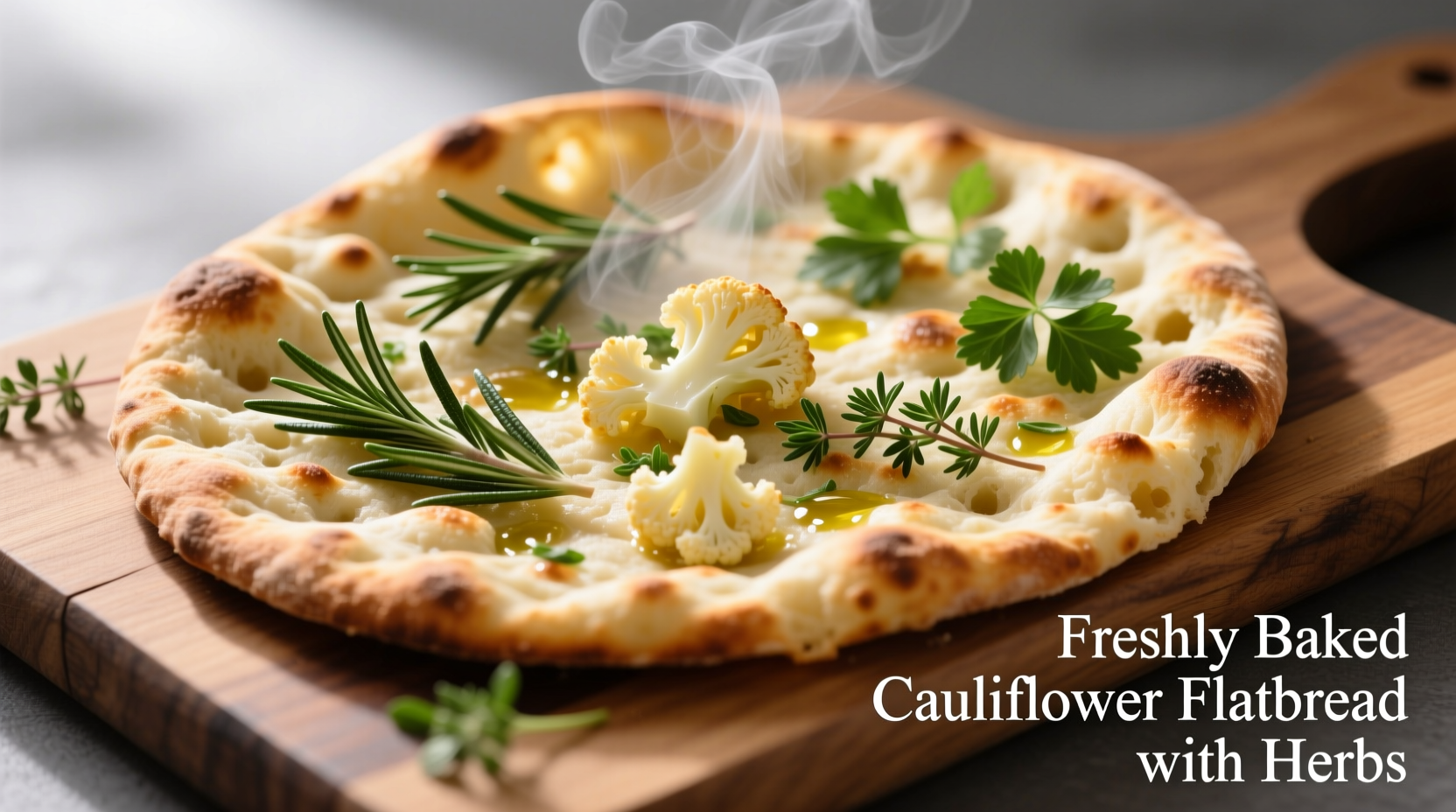Why Cauliflower Flatbread Has Become a Kitchen Staple
Over the past decade, cauliflower flatbread has evolved from a niche dietary alternative to a mainstream kitchen essential. Originally developed as a solution for gluten-sensitive individuals, this versatile flatbread now appeals to keto dieters, health-conscious families, and culinary adventurers seeking lighter meal options. The transformation began around 2013 when food bloggers started experimenting with cauliflower rice as a base, and by 2018, major grocery chains began stocking commercial versions alongside traditional bread products.
| Nutritional Component | Cauliflower Flatbread (per 2oz) | Traditional Wheat Flatbread (per 2oz) |
|---|---|---|
| Calories | 80 | 160 |
| Total Carbohydrates | 8g | 30g |
| Dietary Fiber | 3g | 2g |
| Protein | 5g | 5g |
| Vitamin C | 40% DV | 0% DV |
Nutritional data sourced from USDA FoodData Central (2023)
Perfecting Your Cauliflower Flatbread: A Step-by-Step Approach
Creating consistently excellent cauliflower flatbread requires understanding the science behind moisture control. The key challenge lies in removing sufficient water from the cauliflower rice before binding. Professional chefs recommend using a food processor rather than pre-riced cauliflower for optimal texture control.

Essential Preparation Steps
- Rice and cook: Pulse fresh cauliflower florets until rice-sized, then microwave or steam for 4-5 minutes
- Remove moisture: Wrap cooked cauliflower in a clean kitchen towel and squeeze firmly for 2-3 minutes
- Bind ingredients: Combine with 1 egg, 1/2 cup shredded cheese, and seasonings
- Shape carefully: Press mixture into 1/4-inch thickness on parchment paper
- Bake properly: 400°F for 18-22 minutes until golden and firm to touch
When Cauliflower Flatbread Works Best (And When It Doesn't)
Understanding the context boundaries of cauliflower flatbread prevents kitchen disappointments. This alternative excels as a base for Mediterranean-inspired toppings, light sandwiches, or pizza crusts where structural integrity isn't critical. However, it lacks the elasticity needed for traditional Indian-style roti or Middle Eastern pita that requires pocket formation.
Food science research from the Journal of Food Engineering (2022) confirms that cauliflower flatbread maintains structural integrity best when moisture content stays below 65%. This explains why properly squeezed cauliflower produces superior results compared to shortcuts using frozen riced cauliflower.
Flavor Variations for Every Palate
Customize your cauliflower flatbread with these professional chef-approved variations:
- Mediterranean style: Add 1 tsp dried oregano, 1/2 tsp garlic powder, and 2 tbsp chopped Kalamata olives to the base mixture
- Spicy Southwest: Mix in 1/4 cup corn, 2 tbsp chopped cilantro, and 1/2 tsp chipotle powder
- Herb garden: Fold in 2 tbsp each of fresh rosemary, thyme, and chives before baking
- Cheese lover's: Substitute half the cheese with crumbled feta or goat cheese for tangy complexity
Practical Usage Tips for Home Cooks
Maximize your cauliflower flatbread experience with these evidence-based techniques:
- Storage solution: Keep cooled flatbread in an airtight container with paper towels between layers to absorb excess moisture
- Reheating method: Warm in a dry skillet over medium heat for 2-3 minutes per side rather than using a microwave
- Meal prep strategy: Prepare and bake multiple flatbreads, then freeze between parchment paper for quick weeknight meals
- Topping timing: Add wet ingredients like tomatoes after baking to prevent sogginess
Troubleshooting Common Issues
Even experienced cooks encounter challenges with cauliflower flatbread. Here's how to solve frequent problems:
- Sogginess: Result of insufficient moisture removal - always squeeze cooked cauliflower for at least 2 minutes
- Cracking: Caused by inadequate binding - ensure proper egg-to-cauliflower ratio (1 egg per 3 cups)
- Burning edges: Oven temperature too high - use convection setting or reduce heat by 25°F
- Weak structure: Insufficient baking time - continue baking until edges pull away from pan
Maximizing Your Cauliflower Flatbread Experience
For optimal results, use fresh cauliflower rather than pre-riced varieties, as the moisture content is more predictable. Professional chefs recommend making flatbread in the afternoon when cauliflower is at peak freshness from morning delivery. Pair your creation with vibrant Mediterranean salads or use as a base for creative appetizers at your next gathering. Remember that cauliflower flatbread works best when treated as a complementary element rather than a direct substitute for traditional bread in all applications.











 浙公网安备
33010002000092号
浙公网安备
33010002000092号 浙B2-20120091-4
浙B2-20120091-4